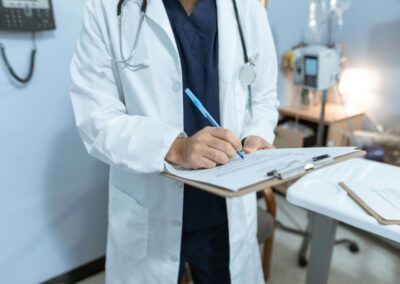Overall, hospitals have done very well in reducing complications related to inserted medical devices such as catheter-associated UTIs (CAUTI’s), central line-associated blood stream infections (CLABSI’s), and ventilator-associated pneumonias (VAP’s). After all, these are all considered hospital-acquired conditions and have been monitored publicly by CMS as part of the overall pay for performance programs for a number of years. Less attention, however, has been paid to other devices such as temporary pacemakers, Swan-Ganz catheters, surgical monitors, etc.,. No doubt, there are complications associated with the introduction of any device. As part of an overall hospital quality improvement program, it makes sense to apply the knowledge we have learned with CAUTI’s, CLABSI’s, and VAP’s to all inserted devices.
Has your hospital developed best practices and monitoring criteria for all inserted devices? There may very well be an opportunity to reduce complications. There are four fundamental questions that should be considered in developing best practices for any device:
1. Was the device indicated in the first place? Obviously the first question that needs to be asked was whether the device was needed at all. The clinical indications must be clearly defined and the patient must meet the criteria. Standing orders in particular should be reviewed, and the temptation to automatically use a device should be discouraged. Additionally, one must consider whether less invasive alternatives could have been used instead. Overall, it becomes a risk-benefit issue that should be addressed with each potential recipient.
2. Was the device appropriately inserted? All members of the team involved in the insertion process must have the appropriate training and ongoing education. In addition to the intrinsic skills, the volume/ utilization numbers should be considered as well. As a general rule for any procedure, the greater the volume performed, the less the complications. For some procedures, the usage of special dedicated teams, example, PICC line teams, should be considered. As processes are improved, they should be incorporated into the best practice protocols.
3. Was there ongoing, daily management? Sometimes in the course of patient care, the focus is too much centered on the acute medical condition, and the concurrent management of the device is put on the back burner, if it is even done at all. This ongoing management is critical in the minimization of complications. In particular, the distal end of the device, the part that is most likely to get infected, should be appropriately cared for and managed. The entry site should be evaluated on a daily basis.
4. Is there an ongoing need for the device? This is the single most important aspect of the total management of the process in terms of complication avoidance. There must be a process in place, on a daily basis, to assess whether the device is still clinically indicated. Many times, devices are left in place over night, or over a weekend for convenience sake, when they could have otherwise been removed. In general, complication rates are proportional to the length/ duration of the treatment. Any interventions that result in earlier discontinuation of the device would logically reduce the overall risk to the patient.
There may well be an opportunity for many hospitals to reduce medical complications by expanding the lessons learned through CAUTI’s, CLABSI’s and VAP’s to all devices. In this era of public reporting of complications and morbidity, attention should be given to all devices, not just those presently specified by CMS.
The above four questions should serve as a template that can be used routinely for hospitals to better manage their care and better reduce patient harm.




